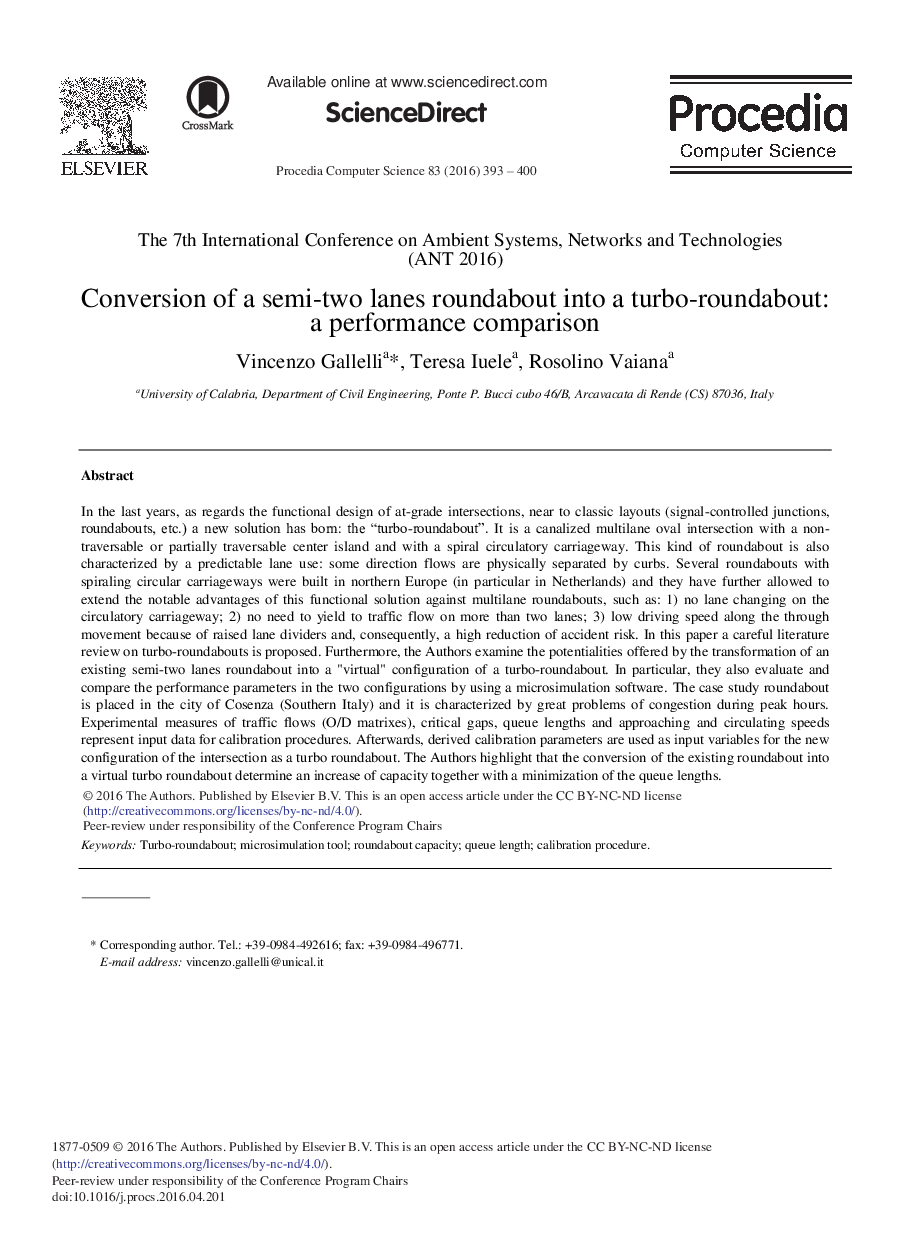| کد مقاله | کد نشریه | سال انتشار | مقاله انگلیسی | نسخه تمام متن |
|---|---|---|---|---|
| 485381 | 703325 | 2016 | 8 صفحه PDF | دانلود رایگان |
عنوان انگلیسی مقاله ISI
Conversion of a Semi-two Lanes Roundabout into a Turbo-roundabout: A Performance Comparison
ترجمه فارسی عنوان
تبدیل یک نیم و دو میدان خطوط به یک توربو-میدان: یک مقایسه عملکرد
دانلود مقاله + سفارش ترجمه
دانلود مقاله ISI انگلیسی
رایگان برای ایرانیان
کلمات کلیدی
توربو-میدان، ابزار میکروسیمولاتور، ظرفیت میدان طول صف، روش کالیبراسیون
موضوعات مرتبط
مهندسی و علوم پایه
مهندسی کامپیوتر
علوم کامپیوتر (عمومی)
چکیده انگلیسی
In the last years, as regards the functional design of at-grade intersections, near to classic layouts (signal-controlled junctions, roundabouts, etc.) a new solution has born: the “turbo-roundabout”. It is a canalized multilane oval intersection with a non-traversable or partially traversable center island and with a spiral circulatory carriageway. This kind of roundabout is also characterized by a predictable lane use: some direction flows are physically separated by curbs. Several roundabouts with spiraling circular carriageways were built in northern Europe (in particular in Netherlands) and they have further allowed to extend the notable advantages of this functional solution against multilane roundabouts, such as: 1) no lane changing on the circulatory carriageway; 2) no need to yield to traffic flow on more than two lanes; 3) low driving speed along the through movement because of raised lane dividers and, consequently, a high reduction of accident risk. In this paper a careful literature review on turbo-roundabouts is proposed. Furthermore, the Authors examine the potentialities offered by the transformation of an existing semi-two lanes roundabout into a “virtual” configuration of a turbo-roundabout. In particular, they also evaluate and compare the performance parameters in the two configurations by using a microsimulation software. The case study roundabout is placed in the city of Cosenza (Southern Italy) and it is characterized by great problems of congestion during peak hours. Experimental measures of traffic flows (O/D matrixes), critical gaps, queue lengths and approaching and circulating speeds represent input data for calibration procedures. Afterwards, derived calibration parameters are used as input variables for the new configuration of the intersection as a turbo roundabout. The Authors highlight that the conversion of the existing roundabout into a virtual turbo roundabout determine an increase of capacity together with a minimization of the queue lengths.
ناشر
Database: Elsevier - ScienceDirect (ساینس دایرکت)
Journal: Procedia Computer Science - Volume 83, 2016, Pages 393-400
Journal: Procedia Computer Science - Volume 83, 2016, Pages 393-400
نویسندگان
Vincenzo Gallelli, Teresa Iuele, Rosolino Vaiana,
